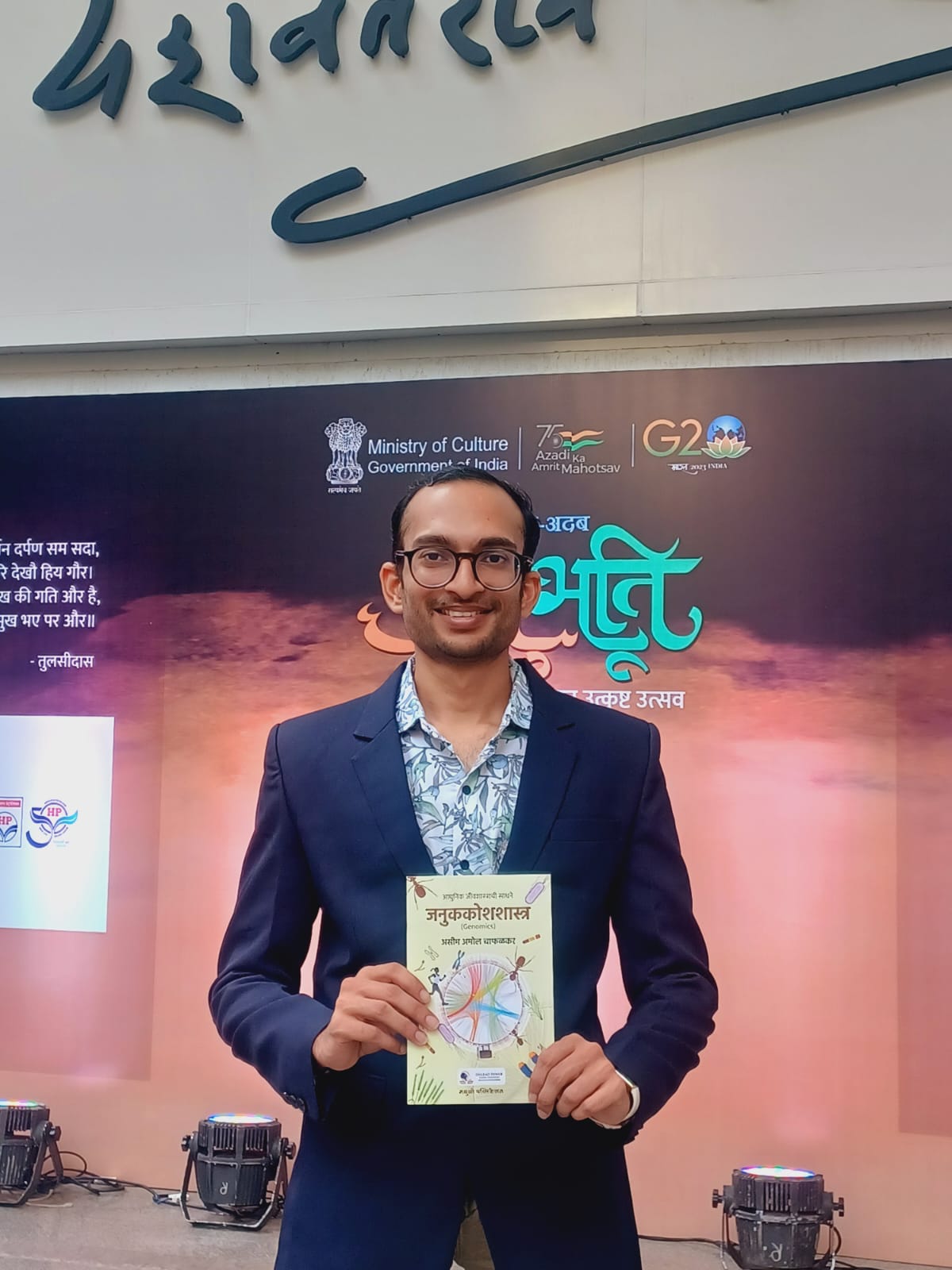Marathi, a tributary of Sanskrit, is a ripe old Indian language full of traditional and cultural wisdom. Any language would only survive as long as there is continued creation of new knowledge in it. With the advent of English as the worldwide language of knowledge in the 21st Century, Marathi suffered too just like any other regional Indian language. I grew up in a Marathi household, reading, writing and speaking primarily in Marathi till the age of 16, and by that time I had already fallen in love with science. The credit goes to all the science books I read till then- text books, Sci-fi, informative, biographies of scientists- all in Marathi. It made an impression on my mind, that science, can be effectively communicated in my mother-tongue, and children like me, could be inspired to learn science by it!


Cut to December 2021- I had just received Sharad Pawar Literary Fellowship to write and publish a book about science in Marathi. But the task of communicating science is not as simple as it used to be when I was a child. Internet is everywhere, English still reigns supreme in the sci-comm (science communication) space, audio-visual media thriving, no one reads books anymore. So, I decided to do the most logical thing- take a topic in biology (Omics) which any lay person would be least interested in, and start writing a book about it in a regional language where there are no words for many of the scientific concepts I want to explain. Hell, I even thought of making it into a series called- ‘Tools in Modern Biology’ which will cover topics like bioinformatics, microscopy, CRISPR-Cas and what not!
After struggling on many levels for over two years, the book is finally out in the market. The book, in its final form, is only about Genomics. It attempts to introduce the topic through important key concepts and representative applications. The book is divided into 6 chapters, the first three are about introduction to Genomics, sequencing technology and databases. The next three chapters are about application of Genomics in different branches of science- basic research in biology, crop improvement and human health. The later three chapters are written with experts from the respective fields- two of which are associated with IGIB. The book is aimed at junior college level students who may be interested in biology, and need some help in deciding where they can contribute.
Having been in the research field for over 10 years, I am astonished with the sheer number of interesting discoveries being made not just in India, but across the world. Compared to that, the number of findings being communicated to the primary stakeholders- the public- is miniscule. This number is even more concerning in regards to regional languages. The wonder and awe I feel with every passing day doing research, I feel needs to be communicated to my fellow countrymen. My mother-tongue gave me all the linguistic tools to get intellectually enriched, it’s only fair if I dedicate my time in enriching her the best way I can. My dream is to enrich Marathi to the point that one would be able to write a proper biology research paper entirely in Marathi! This drives me to write and draw about modern science in Marathi. In the end, I’m deeply satisfied with the book, filled with an optimism that it’ll inspire someone the way I was inspired by all those old books.


Aseem Chaphalkar
Aseem is a PhD scholar who works in Kausik Chakraborty lab on biophysics of protein folding and aggregation. He is an amateur Sci-Fi story writer and science communicator, mostly writes in Marathi.

